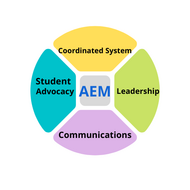Federal Agencies and Resources
(View Complete Item Description)Federal Agencies and Resources Many federal agencies issue regulations, provide technical assistance and enforce different sections of the ADA. For example the Department of Justice is responsible for title II, which applies to state and local governments, and title III, which applies to businesses and non-profit organizations. The Equal Employment Opportunity Commission handles all things related to the ADA and employment. Below is a list of the relevant federal agencies.
Material Type: Primary Source




















